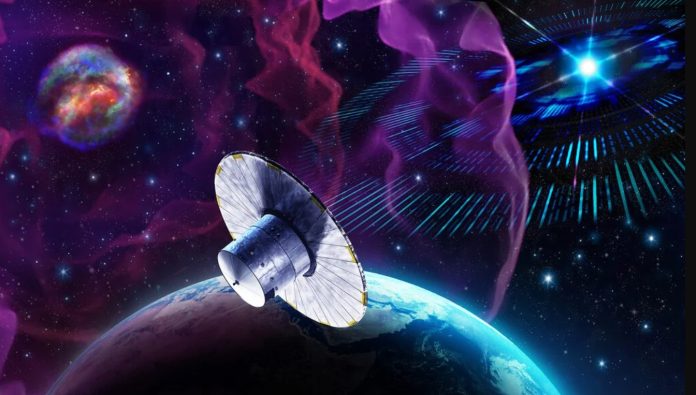
When you’re searching the skies for signs of extraterrestrial intelligence, it’s not a bad idea to be aware of cosmic flares.
In a sense, that is the approach Andy Nilipour, a Yale undergraduate who finished his junior year this spring, took in his first academic study — which was recently published in The Astronomical Journal.
Nilipour surmises that alien civilizations trying to make contact with Earth would understand how daunting — even impossible — it is to monitor all surrounding space in every possible mode of sensing technology.
So, they might time their “hello” message to coincide with a conspicuous astrophysical event that might draw extra attention.
A supernova, for instance.
For the study, Nilipour chose four historical supernovae — exploding stars — from the past 1,000 years and compared how long it took their light to travel to Earth with light signals from more than 10 million stars recorded by the European Space Agency’s Gaia orbiting observatory.
Nilipour found 465 stars whose light took the same amount of time to reach Earth as one of the four supernovae (about 6,300 years, 8,970 years, 16,600 years, and 168,000 years, respectively).
He found another 403 stars whose light signals come from an advantageous angle in relation to one of the supernovae.
And although none of the 868 star systems yielded evidence of an alien “technosignature” — or signs of extraterrestrial technology, past or present — Nilipour and his co-authors said the effort provides a valuable blueprint for conducting additional searches.
Nilipour began the research a year ago as part of a summer program for undergraduates offered by the National Science Foundation and the Breakthrough Listen Initiative at the Berkeley SETI Research Center in California. Steve Croft, a University of California-Berkeley astronomer who directs the program, and James Davenport, an astronomer at the University of Washington, advised Nilipour on the project. Croft and Davenport, along with Andrew Siemion, director of the Berkeley SETI Research Center, are co-authors of the new study.
In an interview with Yale News, Nilipour discussed his work on the study, what its findings portend, and the prospect for intelligent life elsewhere in the universe.
What led you to work on this specific project?
Andy Nilipour: My two mentors, Steve Croft and James Davenport, chose this for me, the idea of developing a geometric technique for constraining technosignal searches.
It’s probably the biggest challenge in SETI right now because there are so many possibilities for the location of a transmission and the nature of the signal.
We merged two searching frameworks — the ellipsoid method, which synchronizes signals to a conspicuous astronomical event, and the Seto method, which is tied to geometric angles and not distance — and applied them to four events.
That would be the supernovae events, correct? How did you pick them?
Nilipour: We chose four historically documented supernovae from the years 1054, 1572, 1604, and 1987, respectively.
In this case, a supernova would act like a lighthouse, a common focal point for the sender of the signal and the receiver of the signal — us.
Were you disappointed you didn’t find evidence of an extraterrestrial signal?
Nilipour: Finding a technosignature would have been incredible, but this really was more about showing a methodology that we can use in the future.
What we’ve done here can be applied to additional Gaia data, to data from TESS [the Transiting Exoplanet Survey Satellite], and to other data as it becomes available.
We’re currently running the same type of analysis using a new supernova in the galaxy M101 that became visible in May of this year, which is the closest supernova in over a decade.
What would a technosignature look or sound like?
Nilipour: There are lots of thoughts about what technosignatures might look like. The most common form that we look for is narrowband radio emission, because, based on our sample size of human technology, this seems to be something that a technological civilization should be producing.
Other forms might be laser emission, close encounters of stars at high velocities, and emission from a star suddenly and dramatically decreasing.
How important is this topic — the search for signs of alien civilizations — to you personally?
Nilipour: Everybody, probably, has wondered at one time or another about whether there’s intelligent life elsewhere in the universe.
For me, it has been something I’ve always been interested in, since elementary school. It’s what got me interested in astronomy. That’s why doing this research was such an amazing experience.
The new study was based on your research experience last summer. What do you have planned for this summer?
Nilipour: I’m on an internship at the National Radio Astronomy Observatory in New Mexico, which is very exciting.
In the fall, I’ll be on a leave of absence from Yale and traveling to Japan, where I will be focused on language studies.
Follow us on Twitter for more articles about this topic.
Written by Jim Shelton.



